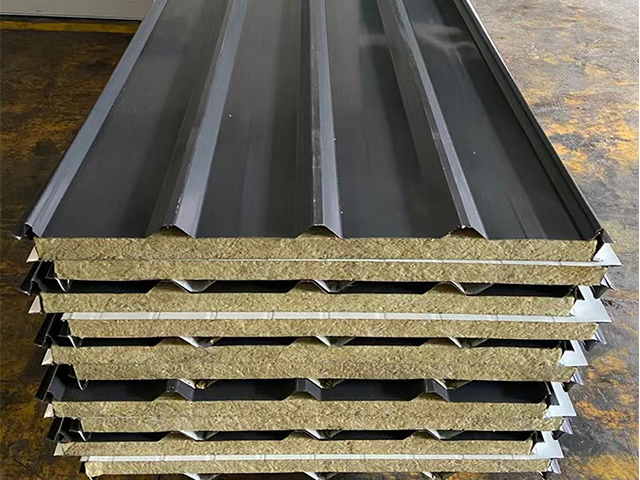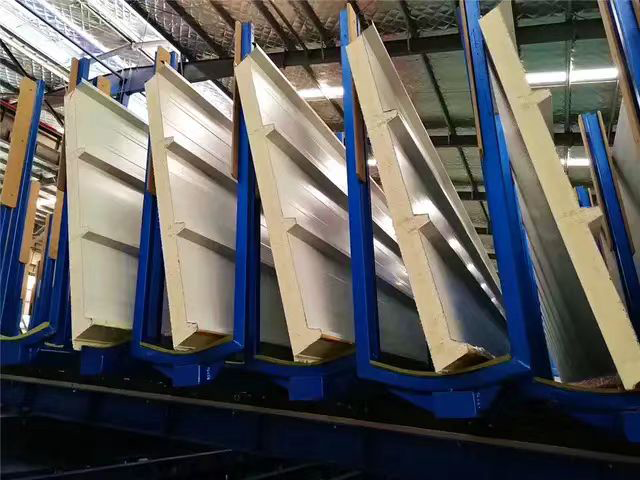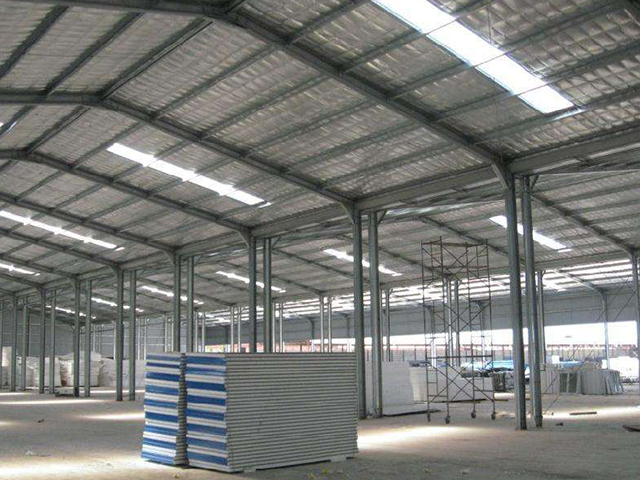Son illərdə dünyada enerjiyə qənaət edən tikinti texnikalarına keçid sürətlə artıb. Bu innovasiyalar arasında sandviç panelin yüksək istilik izolyasiya xassələri və möhkəm konstruksiya möhkəmliyi ilə seçilir. Bu məqalədə müasir ekoloji tikinti praktikalarında sandviç panelin nə qədər vacib olduğunu araşdırmaq məqsədilə onların üstünlüklərini, real layihələrdə necə tətbiq edildiyini və ekspertlərin gələcəkdə bu texnologiyaların inkişaf və tətbiqi ilə bağlı proqnozlarını nəzərdən keçirəcəyik.
Sandviç Panelələrə Bir Nazar
Sandviç panelin iki xarici təbəqəsi var və mərkəzi material polisterol, poliuretan və ya bəzən mineral yun ola bilər. Onların xüsusiyyətini yaxşı termoizolyasiya xassələri ilə yanaşı kifayət qədər konstruktiv möhkəmlik göstəricisi təşkil edir. Panellər yüngül olduğundan daşınma xeyli asandır. İnşaatçılar onları döşəmələr, damlar və divarlar kimi binaların müxtəlif hissələrində quraşdırmaq üçün əlverişli hesab edirlər. Şəhər ərazilərində yerləşən həm yaşayış evlərində, həm də ticarət obyektlərində bu cür konstruksiyalardan yararlanmaq mümkündür. Əmək xərcləri də ənənəvi üsullarla müqayisədə quraşdırma işləri daha az vaxt apardığı üçün əhəmiyyətli dərəcədə azalır.
Enerji effektivliyinin faydaları
Sandwich panelər ənənəvi tikinti paneləri ilə müqayisədə enerjinin qənaət edilməsi baxımından xüsusi bir şey təklif edir. Onların ən mühüm xüsusiyyəti istiliyin itkisini azaltmalarıdır. Bu isə o deməkdir ki, qış mövsümündə binalar soba sistemlərinə çox güvənmədən daha isti qalır. Nəticə isə hər ay enerji xərclərinin azalmasıdır. Bundan əlavə, daha az istilik istifadəsi ümumi karbon emissiyalarının azalmasına kömək edir ki, bu da əksər ölkələrin ətraf mühit üzrə hədəflərinə uyğundur. Bir başqa üstünlüyü də qeyd etmək olar: bu panelərin istehsalında istifadə edilən xammalın böyük hissəsi təkrar emal oluna bilər. Bütün bunlar bizə təbii mühit üçün yaxşı olan və hamımızın danışdığı ideal dairəvi iqtisadiyyata daha yaxınlaşmağa kömək edir.
Hazırda Bina Proqramlarında İstifadə
Sandwich panelin istifadəsi tikinti sektoru boyunca geniş yayılmışdır. Anbarlar və fabriklər kimi sənaye obyektləri üçün bu panellər möhkəm konstruksiyası və yaxşı izolyasiya xassələri ilə əla iş görür. Enerji səmərəliyi nəzərdə tutularaq inşa edilmiş yaşayış binalarında isə temperaturun qışda çox soyuq, yayda isə çox isti olduğu hallarda belə interyerin rahat saxlanmasına kömək edir və eyni zamanda elektrik enerjisinin israf edilməsinə səbəb olmur. Son vaxtlar məktəblər və xəstəxanalarda da onların istifadəsi artır. Bu təşkilatlar tez-tez məhdud büdcə ilə işləyir və eyni zamanda ətraf mühitə təsirini azaltmaq istəyirlər. Sandwich panellər isə hər iki amma uyğundur.
Sandviç Panelində Yenilikləri Satış
Sandviç panel texnologiyasında son inkişaflar əlavə çəki qatmadan izolyasiya xassələrini artırmaq üçün ürək quruluşunun yenidən hazırlanmasına yönəlmişdir. İstehsalçılar termal performansı qoruyan eyni zamanda material istifadəsini azaldan aeroqel kompozitləri və bal petəyi nümunələri kimi materiallarla təcrübələr aparırlar. Eyni zamanda sənayedə təmiz istehsal proseslərinə keçidə dair artan tələblər var. Şirkətlərin çoxu qapalı dövretmə sistemlərinə və emissiya səviyyəsi aşağı olan bərkitmə üsullarına investisiya edərək davamlı inkişaf təşəbbüslərinin bir hissəsi kimi çıxış edirlər. Bununla yanaşı, ağıllı texnologiyaların inteqrasiyası gündəlik binaların necə işlədiyini dəyişdirir. Mərkəzi idarəetmə vahidlərinə qoşulan enerji monitorinq sistemləri obyekt menecerlərinin istifadəni real vaxtda izləməsinə, tez bir zamanda səmərəsizlıqları müəyyənləşdirməsinə və əməliyyatları məsafədən tənzimləməsinə imkan verir. Bu cür rəqəmsal alətlər yalnız kiçik xərclərə səbəb olmur, həm də kommersiya binalarının uzunömürlü strukturlarında texniki xidmət tələblərini əhəmiyyətli dərəcədə azaldır.
Nəticə: İrəli Yol
Sandviç panelin tikintidə rolu gündən-günə artır, çünki binalarda enerji qənaətində real problemləri həll edir. İstehsal texnologiyalarının təkmilləşdirilməsi ilə yanaşı, sənayedə yaşıl tikinti standartlarının sərtləşdirilməsi də composite materiallardan istifadənin artmasına səbəb olacaq. Tikinti sektoru, davamlılıq məqsədlərinə real töhfə verə bilmək üçün müasir tələblərə cavab verməlidir. Memarlar və inkişaf etdiricilər, binalarının ətraf mühit standartlarına cavab verəcəyini gözləyirlərsə, növbəti layihələrində sandviç panel istifadə etməyə diqqət yetirməlidirlər. Bu materiallar həm praktik həllər təqdim edir, həm də konstruktiv möhkəmlik və estetik cəhətdən cəlbedicilik saxlayır.






